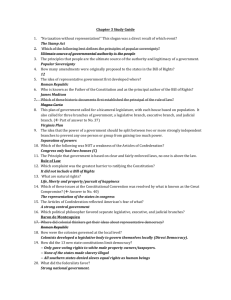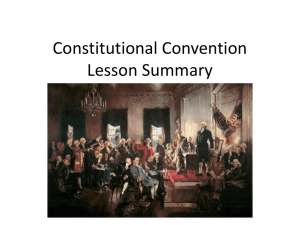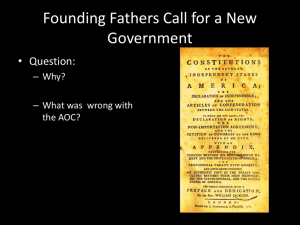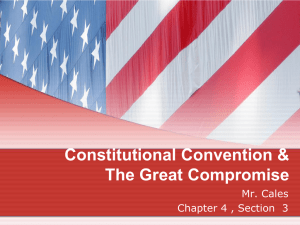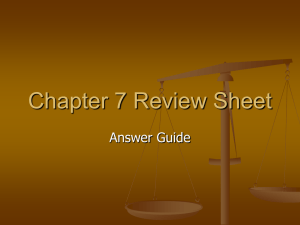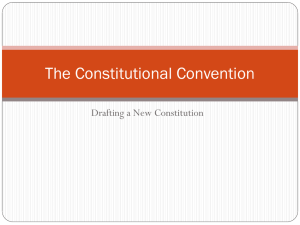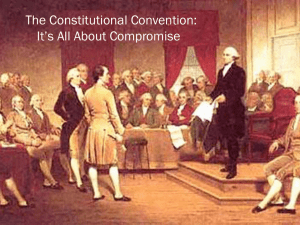Recreate and complete this chart in your notebook. Include at least 3
advertisement
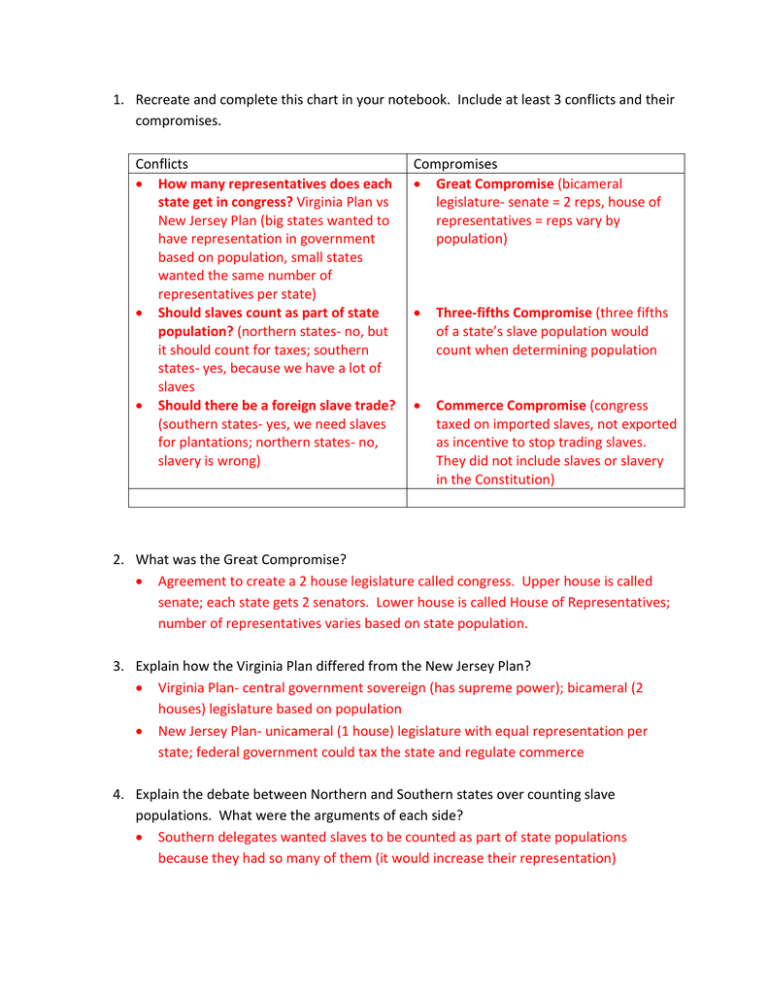
1. Recreate and complete this chart in your notebook. Include at least 3 conflicts and their compromises. Conflicts How many representatives does each state get in congress? Virginia Plan vs New Jersey Plan (big states wanted to have representation in government based on population, small states wanted the same number of representatives per state) Should slaves count as part of state population? (northern states- no, but it should count for taxes; southern states- yes, because we have a lot of slaves Should there be a foreign slave trade? (southern states- yes, we need slaves for plantations; northern states- no, slavery is wrong) Compromises Great Compromise (bicameral legislature- senate = 2 reps, house of representatives = reps vary by population) Three-fifths Compromise (three fifths of a state’s slave population would count when determining population Commerce Compromise (congress taxed on imported slaves, not exported as incentive to stop trading slaves. They did not include slaves or slavery in the Constitution) 2. What was the Great Compromise? Agreement to create a 2 house legislature called congress. Upper house is called senate; each state gets 2 senators. Lower house is called House of Representatives; number of representatives varies based on state population. 3. Explain how the Virginia Plan differed from the New Jersey Plan? Virginia Plan- central government sovereign (has supreme power); bicameral (2 houses) legislature based on population New Jersey Plan- unicameral (1 house) legislature with equal representation per state; federal government could tax the state and regulate commerce 4. Explain the debate between Northern and Southern states over counting slave populations. What were the arguments of each side? Southern delegates wanted slaves to be counted as part of state populations because they had so many of them (it would increase their representation) Northern delegates disagreed (northern states had less slaves, so it would impact them less) 5. What are the 3 branches of government, who is included in each branch, and what are the roles of each? Legislative- Congress (Senate and House of Representatives)- proposes and passes laws Executive- President and departments- makes sure law is carried out Judicial- national courts—interpreting laws, punishing criminals, settling disputes between states. 6. Recreate and complete the following chart in your notebook. Federalists believed: 1. Supported Constitution 2. constitution offered a good balance between various political views 3. Stronger central government than set forth in Articles of Confederation 4. Diversity of US prevents any single group from dominating vs. Antifederalists believed: 1. Opposed constitution 2. Constitutional Convention should not have created a new government 3. Too much power to central government 4. No section that guaranteed individual rights 7. Why were Virginia and New York important to the ratification of the Constitution? Virginia had the largest population in the nation, and New York was an important center for business and trade; political leaders needed the two states’ support to maintain national unity and support for the Constitution. 8. Why is being able to amend the constitution so important? Amendments give political leaders the opportunity to change the Constitution as the nation and Americans’ needs change.
